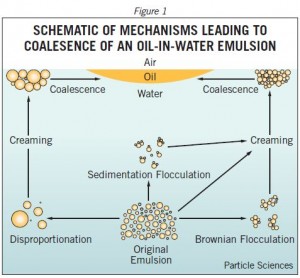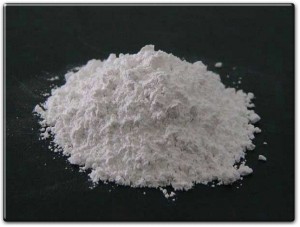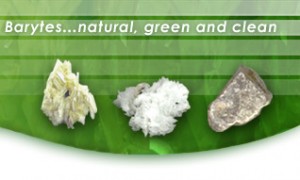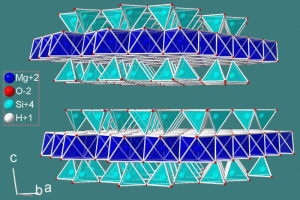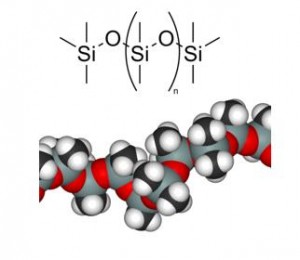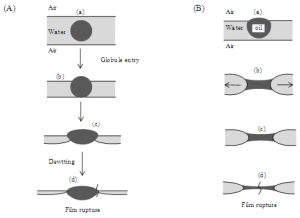Just a short message to say that we have a stand at the IOM3 Rubber Convention 2014. Come and have a chat and a coffee with either myself or Andy Rushton
Silicone Emulsions – A Splitting Headache
Silicone Emulsions ‚Äď A Splitting Headache
Although it was mentioned in our most recent Silicones blog (06/03/14). We here at J Allcock & Sons thought it would be a good idea to add a post about the problem of Silicone emulsions splitting.
Silicone Emulsions are basically Silicone oil, water and an emulsifier. The Silicone oil does the job (usually lubrication), the water carries the oil and allows for easy dilution of the oil and the emulsifier binds the two together.
However, problems can arise in emulsions, the large array of splitting possiblilties are shown perfectly in the diagram below:
Taken from: http://www.particlesciences.com/news/technical-briefs/2011/emulsion-stability-and-testing.html
Though there are many technical terms, the origin of all these kinds of splitting are the same. Like milk, Silicone emulsions can ‚Äėgo off‚Äô if left in a hot, moist environment. Like milk, Bacteria and fungi can grow that feed on the emulsifier and cause the separation of an emulsion, leading to a ‚Äėlumpy‚Äô consistency.
There are a few precautionary measures that can be taken to ensure your Silicone Emulsion doesn’t split;
- Store the container in a cool, dry area
- Do not store diluted material for long periods of time
- Regularly wash out dilution vessels to stop bacteria/fungi carrying over into fresh batches
- Use Allcosil Stabiliser to increase the lifespan of your Silicone Emulsion
We hope this helps answer any questions on silicone splitting you may have. If you’d like more info please get in contact via the website or by calling myself on 0161 223 7181.
Matt Darlington
The Cake Analogy – Fillers
Fillers
When it comes to the rubber industry, there is one metaphor that seems to explain all the necessities and intricacies of rubber. ‚ÄúMaking rubber is a lot like making a cake‚ÄĚ. Since starting at J Allcock & Sons, I‚Äôve heard it over a dozen times, and it still surprises me how apt a saying it is!
I’ve tried punching holes in the saying, and thought I’d finally done it when it came to this subject. If virgin rubber is the flour, release agents the butter on the tin and accelerators the yeast, what would fillers be in the cake analogy?
Calcium Carbonates ‚Äď CaCO3¬≠
Calcium Carbonate is a classic filler for the rubber industry. A cheap and fine grade filler suitable for almost all rubber compounds. If you want to reduce the cost per kilo of a rubber compound (and have already tried reclaim/rubber crumb, we hope!) CaCO3 can stiffen up a compound as well as significantly decrease the total cost of a compound, but it will decrease the compound’s physical properties (another point Reclaim and Crumb can beat CaCO3 on)
J Allcock & Sons provide 2 main types of Carbonate, Trucarb and V/40S Whiting. Trucarb is affectionately known as ‚ÄėGround-up Derbyshire‚Äô as it is simply naturally occurring limestone ground into a fine powder. If you are looking for a cheap filler, Trucarb is the way to go. V/40S Whiting is exactly the same chemically as Trucarb, but acquired from evaporating river water in Italy, and is therefore purer. This produces extremely fine powder of bright white, which is perfect for decreasing the weighted cost of a white compound, without dulling the brightness.
Here is the first hurdle for the cake analogy. Calcium Carbonate is, ironically, a lot like Sodium Bicarbonate in cakes, reducing the total amount of flour needed to produce the same amount of cake batter.
Taken From: http://www.glogster.com/marianchemistry5/calcium-carbonate-sophia/g-6mfbv68tglod14n058a6ja0
Barytes
Barytes is a powder of Barium Sulphate, and is at least twice as dense as CaCO3. Barytes is extremely good at adding weight to your compound, such as a use in moulding rubber weights. Barytes is also very resistant to acid corrosion, as well as x-rays, infrared and radar. It can provide a ‚Äėdeadening‚Äô quality to the rubber compound too.
We provide a single grade of Barytes, Barytes Supreme, which may not provide stealth-grade material, but will bring weight and deadening to a rubber compound.
Barytes could be considered as the fruit and raisins of a cake, any rubber compound made with Barytes will come out like a fruit cake; hard, heavy and resistant to almost anything.
Taken from: http://www.barytes.org/barytes.html
‚ÄėTalc‚Äô/Magsil ‚Äď Magnesium Silicate
Talc is another speciality filler for the rubber industry (as well as plastics, paints and paper). Thanks to it‚Äôs microscopic disc shape, Talc is able to add slip to a compound (see below for an excellent diagram). Very little talc is needed to help a compound through extrusion and calendaring, as well as adding some mild reinforcement to your compound. Talc has an extremely ‚Äėactive‚Äô surface, again due to the flat disc shape of the particles, and thus can absorb sulphur and slow a compound‚Äôs cure rate. This can be rectified with the use of glycol.
Taken From: http://en.wikipedia.org/wiki/File:Talc.GIF
Talc is also often used externally on a compound as a dusting agent (or anti-tack agent) , allowing the stacking of uncured compound sheets without the risk of them sticking together (exactly like the cosmetic use for Talcum powder).
Talc can also be partnered with Silanes, a molecule designed to chemically bond fillers with compounds such as rubbers and plastics, allowing a much larger amount of filler to be used without the degradation of properties normally associated with the use of fillers en-masse. (this will be expanded upon in the next blog post)
Two grades of Talc are available from J Allcock & Sons; Magsil Topaz 350 (or T350) which is our standard Talc, or Magsil Diamond which is a finer powder and thus is able to add greater slippage.
With its brilliant white colour, this fine powder has to be the icing on the cake, literally. Though icing sugar may not add slip to the top of a cake, it is a final addition that completes the baking of a cake in much the same way as powdering with talc signifies the completion of a rubber compound’s mix.
Thanks to Norman for helping with the technical details and editing. As always, if you have any questions please don’t hesitate to contact me by e-mail at matt@allcocks.co.uk or by telephone on +44 (0)161 223 7181
Silicone Oils, Emulsions & Antifoams
Silicone Oils, Emulsions & Antifoams
J Allcock & Sons have been selling silicones to a wide range of industries since the 1970’s. Our last silicones post on 07/11/12 missed out one of our main silicone products and as I have recently started here, I thought it would be a good first topic to write on, with the help of our technical wiz, Norman.
We’d like to go over our 3 main products in the silicone range; Silicone Oils, Silicone Emulsions and Silicone Antifoams. We’ll outline some basic information, uses and grades that J Allcock & Sons offer.
Silicone Oils
Basic Info
Silicone oils are the sensible place to start as all our silicone products are based around silicone oil. silicone oil has many names; some call it Silicone Fluid, Americans tend to call it Dimethicone, while we call it Allcosil 200.
The Scientific name is Polydimethylsiloxane, which is also the most descriptive as the chemistry minded among you can see ‚ÄėPoly‚Äô for many, ‚ÄėDimethyl‚Äô for two methyl groups (CH3) and ‚ÄėSiloxane‚Äô for Silicone and Oxygen. The resulting structure resembling this:
Taken from: http://www.wou.edu/las/physci/ch462/BouncingPutty.htm
Uses
Thanks to its methyl groups and Si-O backbone, silicone oil is one of the most inert oils around. It’s a water repellent, dielectric, temperature resistant, semi-Newtonian and non-toxic lubricant, which lends itself to uses in the moulding, food packaging, automotive and cosmetics industries.
Our Range
Silicone oils come in a wide array of viscosities, which are dependent on the length of the polymer (the longer the polymer, the more viscose the oil). The different viscosities enable silicone oil to perfectly meet desired needs; Allcosil 200/20 has been used for laboratory heat baths, while Allcosil 200/12,500 can be used as a hydraulic fluid. Silicone oil can come in industrial grade, food grade and cosmetic grade. The common viscosities of Allcosil 200 are 20, 100, 200, 350, 1000, 12,500, and 60,000 (the full range and further information can be seen in our previous blog)
Silicone Emulsions
Basic Info
Silicone emulsions contain 3 components silicone oil, emulsifier and water. The silicone oil provides the desired characteristic, most often lubrication. The emulsifier binds the silicone oil with the third component, water, so that the oil is suspended in solution and can be diluted down easily. The emulsifier-bound oil forms microscopic droplets of a uniform size in the water, which thanks to Brownian motion are kept at roughly an even distance apart.
As long as the droplets remain in this suspension the emulsion will be in good working order, however if the droplets are allowed to rise to the top of the solution (‚ÄėCreaming‚Äô) form into small clusters (‚ÄėFlocculation‚Äô) combine into large droplets (‚ÄėCoalescence‚Äô) or form a continuous layer on the solution‚Äôs surface (‚ÄėBreaking‚Äô) the emulsion will cease to work (see below for a good schematic).
If any of these problems occur, we at J. Allcock & Sons will be able to help solve the problem. We have our own stabilizing agent (Allcosil Stabilizer) that can resolve most emulsion separation issues.
Taken from: http://www.particlesciences.com/news/technical-briefs/2011/emulsion-stability-and-testing.html
Uses
Silicone emulsions are mainly used as a lubricant. One such use is as an anti-nesting agent for the thermoplastic container industry, another as a mould release agent in the rubber industry. Wherever a small amount of silicone oil is needed (usually in ppm) silicone emulsion is the best product.
Our Range
We have a wide range of silicone emulsions available. Allcosil 35 is a 35% silicone oil emulsion suitable for industrial use, while Allcosil 356 and Allcosil 435FG are food grade 35% emulsions. A 60% Silicone oil emulsion suitable for industrial use (Allcosil 60B) may be useful if a smaller dilution is required. We also supply high viscosity oil emulsions, if you wish to use higher centistoke oil in your emulsion (Other emulsions are available) Again our previous blog post has more information on emulsions.
Silicone Antifoam
Basic Info
Antifoams use the intrinsic property of silicone oil to lower water surface tension to pop bubbles and eliminate foam (see below) Silica particles are also present to help pop bubbles through physical piercing.
Taken From: http://journals.sfu.ca/rncsb/index.php/csbj/article/view/csbj.201210014/184
Uses
Silicone antifoams can be used wherever foams form and need to be removed. When solutions are pumped through a high pressure system, soaps are used, or froth is generated by chemical or biological action e.g. in sewage treatment, antifoam can be used to totally remove foam from the solution.
Our Range
As only tiny amounts of silicone are needed for the antifoam effect, J. Allcock & Sons provide two main products, A.011 and Allcosil 30G Antifoam, 10% and 30% silicone based antifoams respectively. We also provide food grade antifoams for the food industry, both 10% and 30% available.
I hope this helps in any Silicone-based queries you may have. If you’d like more information or are interested in any of our products please call myself on +44 (0)161 223 7181
Matt Darlington
Rubber Reclaim Part 2
Although we’ve blogged about Rubber Reclaim in two previous posts (31/08/12 & 13/09/12), we thought another blog would reinforce Rubber Reclaim as a viable rubber hydrocarbon source, carbon black source and¬†process aid.
In the 31/08/12 blog, which is still available to read, we wrote about how it is made, its basic properties and why a compounder should use it. In this post we hope to expand on these slightly and talk about ourselves, as UK and European suppliers of Reclaim.
How Rubber Reclaim is made:
Step 1) Collection and Selection of suitable materials
This is probably the most important step. In order to get a uniform and consistent product you have to use the correct materials. This is a part of the process that for many years has been overlooked hence producing inconsistent materials.
Step 2) Reduction in size and removal of contaminants.
In Tyre Reclaim this consists of removing the bead wire, cutting out the side wall then granulating the remaining materials to 2-4mm removing textile and metals.
In Butyl Reclaim Tubes are de-valved  and patches removed before being granulated.
Step 3) Blending
The rubbers are mixed with the chemicals required and the oils needed for the reclaiming process to take place.
All the chemicals and oils used today are REACH registered and compliant on PAH’s
Step 4) Cooking
This is where the materials are heated up. There are 2 main ways this is done either using an extruder to produce mechanical heat. Alternatively the materials are cooked in a digester using steam pressure to give 160¬į C
Step 5 ) Mastication
Either in the extruder or on a 2 roll mill the rubber is worked which breaks the polymer chain, also refining and blending the reclaim
Step 6) Filtering
The better quality producers at this point extrude the materials through a 60‚Äôs mesh (250 ¬Ķm) filter to remove any undigested materials (nibs)
Step 7) Finishing
The filtered material is either extruded into blocks or is put back on a mill where a paper thin sheet is built up to 15mm thickness before being cut into blocks, coated in anti-tack agent and weighed off into the desired bundle weight (normally 25 kilos, but any bundle size is possible on request)
So why should you use Rubber Reclaim?
3 Reasons; RHC Source, Carbon Black Source and Processing Aid.
1) Rubber Hydrocarbon Source
Reclaim is a more cost effective source of rubber hydrocarbon than virgin rubber.
- Attractive Price – Reclaim generally contains 50%+ RHC . For every 1% Reclaim you add you save 0.6% on Compound Cost*
- Price Stability РPrices are not affected by NR and SBR prices.
* Based on an average compound cost of £1-70/kg

NR Prices versus Reclaim Prices
2) Carbon Black Source
- Tyre reclaim contains approximately 27% of reinforcing Carbon Black
- Easy to use as a Black Masterbatch
- Much cleaner and easier to handle
3) Processing Aid
- Improved Processing
- Uniformity
- Low Heat Development
- Low Thermoplasticity
- Minimum Reversion
- Low Swelling and Shrinkage
- High Rate of Cure
- Good Aging
- Good Shape Retention
- Improved Tack
Other Savings include reduced mixing times and power consumption
Markets
There are 3 main types of rubber reclaim; tyre, butyl and EPDM. These reclaim serve a number of markets:
1) Tyre Reclaim
-  Tyres- New
- Retreading
- General Moulding
- Belting
- Adhesives
- Footwear
- Sheeting/Matting
2) Butyl Reclaim
- Inner Tubes
- Tyre Lining
- Tyre Repair
- Cable Bedding Compound
- Sound Reduction
- Sheeting & Belting
- Mastics and Adhesives
3) EPDM Reclaim
- Automotive Extrusions
- Hoses
- Civil Engineering Extrusions
- General Moulding
- Roofing Membrane
Where do J. Allcock & Sons fit in?
J. Allcock & Sons are UK distributors of¬† Rubber Reclaim for GRP Limited, who are based in India and have a maximum capacity of 89,000MT’s per year.
We have been supplying reclaim from GRP Limited for many years and have proven it to be a successful partnership and have expanded our customer base overseas.
Although GRP Limited have distributors all over the world, any enquiries are welcome and if we cannot supply GRP Products to your location ourselves, we would happily point you in the right direction!
To conclude this post. Please do not hesitate in emailing ja@allcocks.co.uk  or phoning on +44 (0)161 223 7181 for any enquiries or information on reclaim. We firmly believe reclaim has a place in todays rubber compounding market.
New Year 2014
Hi Everybody,
Just a line to say Happy New Year to all our readers, suppliers and customers.
Best Wishes from all the staff.
Please note our staffing changes:-
Arthur Brookes has now left our employ, and we all wish him the best in his well earned retirement.
Keith Devine has now fully taken over Arthur’s duties, and you should now contact him for all your crumb, granule and recycling requirements.
Sadly, Luke Gilbert will be leaving us at the end of January. He is going travelling in Australia, New Zealand and South East Asia. It’s alright for some !! He will be sorely missed. ¬†A replacement will be put in place as soon as possible.
Red/Brown & Green FKM Crumb Available

Red/Brown and Green FKM Crumb
J. Allcock & Sons’ now have the ability to provide¬†an extra¬†11 tonnes of Red/Brown FKM Crumb and¬†4 tonnes of Green FKM crumb¬†per month.
Cured FKM scrap is sent to our facilities on a monthly basis and we granulate and “crumb” this¬†FKM¬†scrap¬†to¬† 72′s and¬†120′s mesh particle size. These particle sizes are not averages, so when we say 120′s Green FKM Crumb, we mean the biggest particle you will find will be 120′s mesh!
We always ask the customers we visit: What’s the cost of¬†testing FKM Crumb in your compound? Compare that amount, to the amount you will be saving if tests came back positive and you started using it…
If you are interested in trialling some of the above crumb, please contact us at ja@allcocks.co.uk or +44 (0) 1612237181.
Alternatively, if you are unsure about using a different FKM¬†compounded crumb¬†in your own FKM compound, why not speak to us about “crumbing” some of your scrap and¬†J. Allcock & Sons’¬†sending it back to you?
Carnauba Wax
I haven’t written a technical blog recently, so I have decided that I should write one regarding Carnauba wax. We have high stocks of Type 3 Carnauba wax, in powder form, so perhaps it might bring us some new sales!
With the help of Norman Challinor, here is some information on Carnauba wax!
Carnuaba wax is also known as Brazil wax and Palm wax. It is a hard wax obtained from the leaves of the palm copernicia prunifera - a plant native to and only grown in north eastern Brazil.
It is usually in the form of hard yellow / brown flakes that can also be ground down to a fine powder and often offered in that alternative form.
Due to its fantastic properties compared to other waxes, most people believe it is one of the best waxes in the world; hence it is sometimes referred to as the ‚Äúqueen of waxes.‚ÄĚ
It has a melting point of 80 ‚Äď 86 oc and a density of about 0.97
The main components are:-
Aliphatic esters                                                   (40% by wt.)
Di-esters of 4 ‚Äď hydroxycinnamic acid¬†¬†¬†¬†¬†¬†¬†¬†¬†¬†¬†¬†¬†¬†¬†¬†(21% by wt.)
ŌČ ‚Äď hydroxycarboxylic acids¬†¬†¬†¬†¬†¬†¬†¬†¬†¬†¬†¬†¬†¬†¬†¬†¬†¬†¬†¬†¬†¬†¬†¬†¬†¬†¬†¬†¬†¬†¬†(13% by wt.)
Fatty acid alcohols                                              (12% by wt.)
Predominantly derived from acids and alcohols in the c26 ‚Äď c30 ¬†range.
Carnauba wax, can come in Type 1, Type 3 and Type 4. These ‚Äútypes‚ÄĚ relate to the purifity level, with Type 1 being most pure and Type 4 being least.
It has a very wide range of uses, including …..
- Polishes (Usually Type 4 used)
- Food (chewing gum, gravy, sauces, sweets etc) (Usually Type 1 used)
- Pharmaceutical (tablet coating agent)  (Usually Type 1 used)
- Cosmetic (Usually Type 1 used)
- And of course, as a process aid and mill / mould release agent in rubber compounds, particularly the harder to process specialist materials. (Usually Type 3 used)
For rubber compounders:
In rubbers, the hard nature of the material will not act as a softener but will behave as an internal lubricant, facilitating the incorporation and dispersion of the non-rubber ingredients.
Its relatively low melting point means that it will migrate to the surface of the rubber and form an extra, very thin, layer between the rubber surface and the metal it is in contact with Р- i.e. The mill bowls or the mould surface.  The hardness of the wax means that it will not act as a sticky softener, but will form a release layer, overcoming the tendency for the rubber to stick to the metal.
Allcocks mostly sell, Type 3 Powder, and we really focus on selling to the high specification rubber compounding industry, such as FKM compounds.
Here is some technical information on our T3 Carnauba Wax Powder:
Solubility                                      Insoluble in water; partially soluble in Alcohol.
.                                                   Soluble on warming in Ethyl Acetate & Xylene.
Melting Point¬†¬†¬†¬†¬†¬†¬†¬†¬†¬†¬†¬†¬†¬†¬†¬†¬†¬†¬†¬†¬†¬†¬†¬†¬†¬†¬†¬†¬†¬† 80-86¬įC
Acid Value                                   2-7 mg KOH/g
Sponification Value                     78-95 mg KOH/g
Ester Value                                 71-93 mg KOH/g
Sulphated ash                             No more than 0.25% w/w
Unsaponifiable matter¬†¬†¬†¬†¬†¬†¬†¬†¬†¬†¬†¬†¬†¬†¬†¬†¬†50-55 őľm
Particle Size¬†¬†¬†¬†¬†¬†¬†¬†¬†¬†¬†¬†¬†¬†¬†¬†¬†¬†¬†¬†¬†¬†¬†¬†¬†¬†¬†¬†¬†¬†¬†¬†100% ¬†passing 600 őľm
.¬†¬†¬†¬†¬†¬†¬†¬†¬†¬†¬†¬†¬†¬†¬†¬†¬†¬†¬†¬†¬†¬†¬†¬†¬†¬†¬†¬†¬†¬†¬†¬†¬†¬†¬†¬†¬†¬†¬†¬†¬†¬†¬†¬†¬†¬†¬†¬†¬†¬† 94.8% passing 300 őľm
.¬†¬†¬†¬†¬†¬†¬†¬†¬†¬†¬†¬†¬†¬†¬†¬†¬†¬†¬†¬†¬†¬†¬†¬†¬†¬†¬†¬†¬†¬†¬†¬†¬†¬†¬†¬†¬†¬†¬†¬†¬†¬†¬†¬†¬†¬†¬†¬†¬†¬† 88.1% passing 250 őľm
.¬†¬†¬†¬†¬†¬†¬†¬†¬†¬†¬†¬†¬†¬†¬†¬†¬†¬†¬†¬†¬†¬†¬†¬†¬†¬†¬†¬†¬†¬†¬†¬†¬†¬†¬†¬†¬†¬†¬†¬†¬†¬†¬†¬†¬†¬†¬†¬†¬†¬† 40.6% passing 125 őľm
If you have any questions regarding carnauba wax, please feel free to email ja@allcocks.co.uk! Despite only selling T3 Carnauba Wax powder, please feel free to get in touch regarding other types, we may be able to help.
ISO 9001:2008
J. Allcock & Sons have been certified ISO 9001:2008 since 14th of January 1997. This month we had our re certification audit and have now gained certification up until 9th March 2016.
We are proud to be certified ISO 9001:2008 and believe this shows our commitment to keeping high standards and customer satisfaction throughout our organisation. We also believe we are probably the only rubber recycler in the UK to attain this certification.

ISO 9001:2008 Certificate
Thermogravimetric Analysis (TGA) Testing Service
After investing in a PerkinElmer TGA 4000 machine to measure the ash content of our crumbs we have decided to¬†offer a “TGA Testing Service.”
Our¬†thermogravimetric analysis¬†machine will heat from ambient (room temperature) up to 1000¬įC. General applications for TGA machines are as follows:
- Sample volatility
- Moisture content
- Oxidation stability
- Decomposition temperatures
- Carbon black content
- Performance of stabilizers
- Ash Content
- And much, much more

PerkinElmer TGA 4000
If you are interested in TGA testing of your products or raw materials, please contact our offices (tel: 01612237181) or email ja@allcocks.co.uk for a quote.


